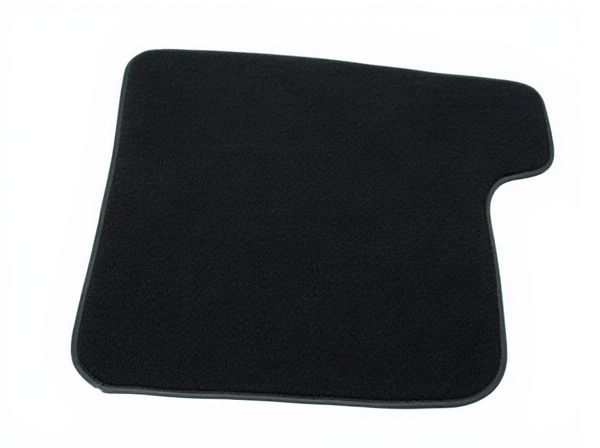
Photo illustration: UV-resistant Material vs Standard Material
UV-resistant material offers superior protection against harmful ultraviolet rays, maintaining its strength and color longer than standard material. Standard material often degrades quickly when exposed to sunlight, leading to fading, brittleness, and reduced lifespan. Choosing UV-resistant options ensures your products remain durable and visually appealing even under prolonged sun exposure.
Table of Comparison
| Feature | UV-Resistant Material | Standard Material |
|---|---|---|
| Sunlight Protection | High UV resistance prevents fading and degradation | Low resistance; prone to fading and cracking |
| Durability | Enhanced longevity in outdoor and high-sunlight conditions | Shorter lifespan under direct sunlight exposure |
| Color Retention | Maintains vibrant color longer | Colors fade quickly over time |
| Maintenance | Easy to clean with no special care required | Requires frequent cleaning and more care |
| Cost | Higher initial investment due to advanced materials | Lower upfront cost but may require replacement sooner |
Introduction to UV-Resistant vs Standard Materials
UV-resistant materials are engineered to withstand degradation caused by ultraviolet radiation, offering enhanced durability and prolonged lifespan compared to standard materials. Unlike standard materials, which may fade, weaken, or become brittle when exposed to sunlight, UV-resistant materials incorporate additives or coatings that absorb or reflect harmful UV rays. This distinction is crucial for applications in outdoor environments, where exposure to sunlight can significantly impact material performance and maintenance costs.
Understanding UV Degradation
UV-resistant material significantly slows the process of UV degradation by incorporating additives like UV stabilizers and absorbers that protect polymers from breaking down under ultraviolet exposure. Standard materials lack these protective elements, causing them to fade, crack, and weaken more rapidly when exposed to sunlight. Understanding UV degradation involves examining molecular changes such as chain scission and oxidation, which UV-resistant materials effectively mitigate to enhance durability and lifespan.
Composition of UV-Resistant Materials
UV-resistant materials are specially formulated with additives such as UV stabilizers, absorbers, and hindered amine light stabilizers (HALS) that protect their polymer chains from degradation caused by ultraviolet radiation. These compositions often include titanium dioxide or carbon black pigments that help block or absorb UV rays, prolonging the material's lifespan. Standard materials lack such protective compounds, making them more susceptible to discoloration, brittleness, and structural breakdown under prolonged sun exposure.
Key Differences: UV-Resistant vs Standard Materials
UV-resistant materials are engineered with additives such as UV stabilizers and absorbers, enhancing their durability and preventing degradation when exposed to sunlight, unlike standard materials which tend to fade, weaken, or crack over time. These specialized materials maintain color stability, mechanical strength, and surface integrity under prolonged UV exposure, making them ideal for outdoor applications including construction, automotive, and textiles. Conversely, standard materials lack these protective properties, resulting in reduced lifespan and increased maintenance due to vulnerability to ultraviolet radiation damage.
Performance Under Sunlight Exposure
UV-resistant materials maintain structural integrity and color vibrancy significantly longer than standard materials when exposed to prolonged sunlight, reducing degradation and fading. Their enhanced molecular composition effectively blocks harmful ultraviolet rays, preventing surface cracking and brittleness. In contrast, standard materials often exhibit accelerated deterioration, leading to reduced lifespan and increased maintenance costs under continuous UV exposure.
Lifespan and Durability Comparison
UV-resistant materials significantly outperform standard materials in lifespan and durability, often lasting 50-70% longer under constant sun exposure due to their enhanced polymer additives and UV inhibitors. Standard materials typically degrade within 1-3 years when subjected to harsh UV rays, experiencing warping, fading, and structural weakness. Choosing UV-resistant options ensures prolonged material integrity, reduces maintenance costs, and preserves aesthetic quality in outdoor applications.
Typical Applications in Industry
UV-resistant materials are essential in outdoor industrial applications such as roofing, automotive components, agricultural films, and marine equipment, where prolonged exposure to sunlight can cause degradation in standard materials. Standard materials, while suitable for indoor or short-term use, often suffer from fading, brittleness, and loss of mechanical properties under UV radiation. Utilizing UV-resistant polymers or coatings enhances durability and longevity in industries requiring weather-resistant performance, including construction, transportation, and renewable energy sectors.
Cost Analysis: UV-Resistant vs Standard Materials
UV-resistant materials often incur higher upfront costs compared to standard materials due to specialized additives and treatments that enhance durability against ultraviolet radiation. Over time, UV-resistant materials reduce maintenance and replacement expenses by preventing degradation such as fading, cracking, and brittleness, which are common in standard materials exposed to sunlight. Considering lifecycle cost analysis, UV-resistant materials prove more economically efficient in outdoor applications despite their initial price premium.
Environmental Impact Considerations
UV-resistant materials significantly reduce environmental impact by prolonging the lifespan of products, minimizing waste and resource consumption compared to standard materials prone to degradation. Their enhanced durability decreases the frequency of replacement and disposal, leading to less landfill accumulation and lower carbon emissions from manufacturing processes. Opting for UV-resistant materials supports sustainability by conserving raw materials and reducing environmental pollution associated with frequent product turnover.
Choosing the Right Material for Your Needs
UV-resistant materials offer enhanced durability by blocking harmful ultraviolet rays, preventing degradation and color fading compared to standard materials. Selecting UV-resistant options is essential for outdoor applications like furniture, roofing, and vehicle coverings, where prolonged sun exposure can cause rapid wear. Assessing the environmental conditions and lifespan requirements ensures the right choice between UV-resistant and standard materials for optimal performance and longevity.
 caratoz.com
caratoz.com